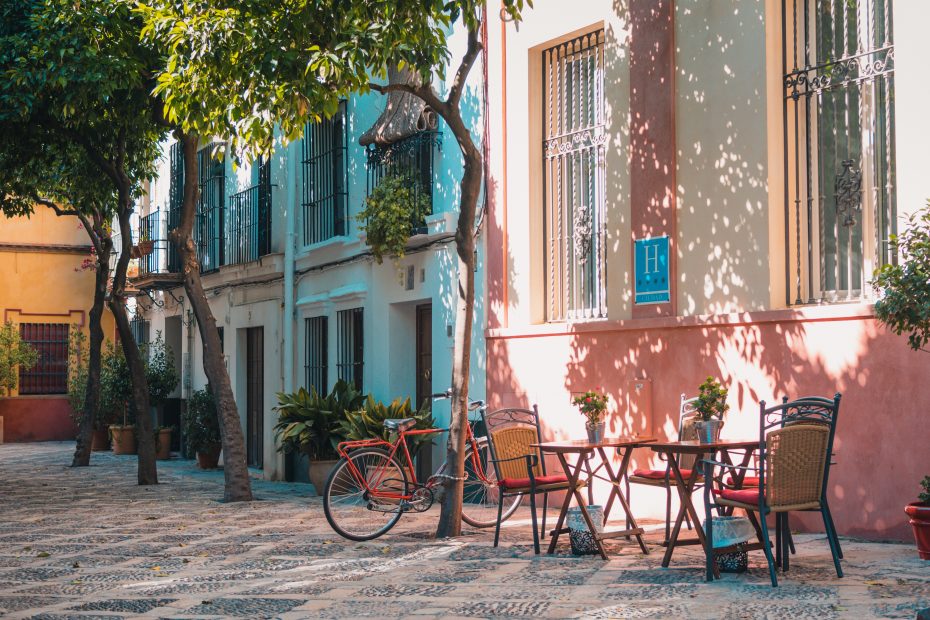Spain is a country with a rich architectural heritage spanning many centuries. From Gothic cathedrals to Islamic palaces, Romanesque churches to Modernisme, the diverse styles reflect the nation’s complex history. For travelers interested in architecture, Spain offers a treasure trove of majestic marvels to discover.
Table of Contents
Gothic Architecture
The Gothic style emerged in France in the 12th century before spreading to other parts of Europe. Characterized by soaring vaults, flying buttresses, pointed arches and elaborate decoration, Gothic architecture aimed to create bright, tall interior spaces that inspired spiritual elevation.
Spain boasts some of Europe’s finest examples of Gothic architecture. The awe-inspiring La Sagrada Familia in Barcelona has become an iconic symbol of the city. Designed by celebrated architect Antoni Gaudí, construction began in 1882 and continues today. Its towering spires and elaborate carvings showcase Gaudí’s spectacular vision.
The 13th century Burgos Cathedral in northern Spain exemplifies classic Gothic style. Its vast interior brims with ornamental flourishes and its two lofty towers dominate the skyline.
Moorish Architecture
Moorish architecture originated with the Moors, North African Muslims who ruled parts of Spain between 711 and 1492 AD. Intricate geometric and botanical designs, horseshoe arches, domed ceilings and minarets characterize this distinctive style.
The magnificent Alhambra palace and fortress complex in Granada stands as one of the finest accomplishments of Moorish architecture. Elaborately decorated halls and courtyards reflect the advanced civilization that thrived under Muslim rule.
Córdoba’s Mezquita similarly demonstrates the splendors of Moorish design with its striped arches and Byzantine mosaics.
Romanesque Architecture
Developed between the 10th and 12th centuries, Romanesque architecture is recognizable by its rounded arches, barrel vaults and robust stone construction. As Christianity spread across Medieval Europe, Romanesque churches and monasteries were built along pilgrimage routes like the Way of St. James through northern Spain.
The Cathedral of Santiago de Compostela soars over the city’s historic center. As the reputed burial site of the apostle St. James, it continues to draw pilgrims to its grand Romanesque interior. The nearby 9th century Santa Maria del Naranco is a rare, well-preserved example of secular Romanesque architecture.
Renaissance Architecture
Originating in Italy, Renaissance architecture signaled a rebirth of classical Greek and Roman forms, like Doric columns and symmetrical facades. The Renaissance spread across Europe and left its mark on Spanish buildings from the 15th century onward.
The imposing Palacio de Carlos V stands within the ornate Alhambra complex. Its colonnaded rotunda and classic style make a striking contrast to the surrounding Moorish structures.
The University of Salamanca boasts elegant Plateresque and Renaissance facades, blending ornate decoration with harmonious proportions. Its handsome buildings exemplify Spain’s embrace of humanism and the Renaissance.
Baroque Architecture
Baroque architecture emerged in 17th century Europe, emphasizing dramatic shapes, opulent ornamentation and grandiose designs meant to inspire awe. It became the preferred style for imposing public buildings in Spain’s cities as the country reached its peak as a global power.
Located in the heart of Madrid, the stately Royal Palace testifies to the wealth and might of the Spanish empire under its Baroque-loving monarchs. Nearby, the Plaza Mayor’s arched walkways form a harmonious, uniform square, exemplifying Spanish Baroque town planning.
Modernisme Architecture
Modernisme originated in Catalonia in the late 19th century as the Catalan version of Art Nouveau. It relied heavily on curving, plant-like forms and highly stylized decoration.
Many of Barcelona’s Modernisme works came from the visionary architect Antoni Gaudí. His Casa Batlló resembles a mythical creature with its shimmering facade of colored tiles. The fantastical park he designed, Park Güell, similarly showcases his organic style with its undulating benches and mosaic lizards.
Conclusion
From the soaring vaults of the Gothic period to the flamboyant details of Baroque, Spain’s architectural legacy vividly reflects its history and cultural identity. For architecture aficionados, marvelous treasures await to be discovered across Spain’s cities and towns. The lasting monuments of its diverse architectural heritage continue to inspire awe and wonder through the centuries.
FAQs
What are some key Moorish architecture sites in Spain?
Some of the most magnificent examples of Moorish architecture in Spain include the Alhambra in Granada and the Mezquita in Córdoba. Their elaborate geometric designs and botanical motifs reflect the advanced Islamic civilization that ruled much of Spain for centuries.
Where can you see excellent examples of Gothic architecture in Spain?
Spain has many outstanding Gothic structures, including Burgos Cathedral with its soaring spires and the fantastical La Sagrada Familia designed by Antoni Gaudí in Barcelona. These and other Spanish Gothic cathedrals feature characteristic pointed arches, flying buttresses, and vaulted ceilings.
What is distinctive about Romanesque architecture in Spain?
Romanesque architecture is recognized by its large stone construction, rounded arches, and barrel vaults. Excellent examples are found along the Way of St. James pilgrimage route in northern Spain, like the grand Santiago de Compostela Cathedral and the distinctive Romanesque church of Santa Maria del Naranco.
Where can you experience Spanish Renaissance architecture?
The Renaissance Palacio de Carlos V in Granada’s Alhambra complex exemplifies Renaissance symmetry and classical forms. The University of Salamanca also showcases elegant Renaissance and Plateresque facades, representing Spain’s 16th century embrace of humanism.
What are some top sites to see Spanish Baroque architecture?
The Royal Palace and Plaza Mayor in Madrid are fine examples of grandiose Spanish Baroque architecture meant to showcase power and wealth. Their dramatic shapes, opulent details, and spacious proportions reflect the prominence of Baroque style during Spain’s imperial heyday.
